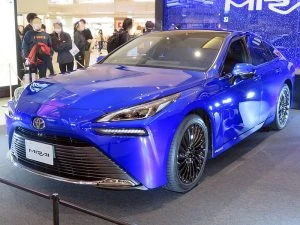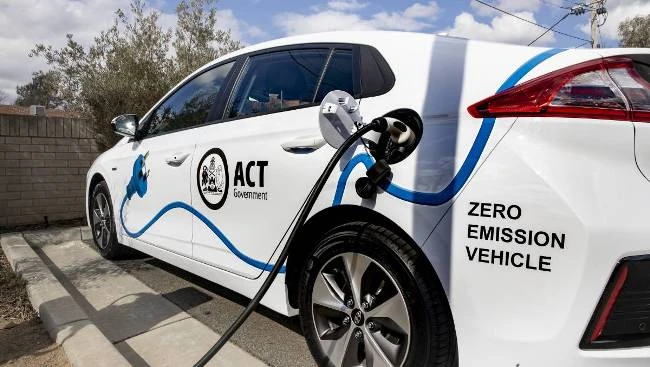Fueling your Car
Japan’s Automotive Brilliance

Tokyo, Japan
You can’t go anywhere around Australia without noticing just how many Japanese made vehicles are motoring around our roads (and off them). Since the 1960s, Japan has been among the top 3 automotive manufacturers in the world. The country is home to a number of motor companies, and you’ll be familiar with them: Toyota, Honda, Nissan, Mitsubishi, Suzuki, Subaru, Isuzu. There are, of course, more than these mainstream manufacturers. Japan has around 78 car-manufacturing factories in 22 regions, and these employ over 5.5 million people (more than the entire population of New Zealand).
The strong competition that is happening on a global scale in the automotive industry has forced the manufacturers to come up with a new model design every four to five years. Along with the new models, new innovative designs and new technologies are presented and used by the automakers in their new vehicles. Automotive manufacturing is the prominent manufacturing type in Japan, which takes up 89% of the country’s manufacturing sector. A large amount of time and money are invested into developing and improving the automotive manufacturing process, which, in turn, increases the quality and efficiency of their manufactured automotive products.
Some of the brilliant new developments from Japan automobile manufacturers have led to distinct and innovative new designs for current and future automobiles. In order to control the market dependency on fuels, and in order to design vehicles that are more fuel-efficient, Japanese automakers have invested and built hybrid vehicles and fuel-cell vehicles.
The ideology and popularity of environmentally friendly vehicles is creating a wave of global interest and demand for these sorts of vehicles. More and more automakers around the globe are focusing on creating the types of vehicles that are friendlier on the environment to their production line. Japan’s automotive manufacturers are leaders in this field. Japanese innovations in these technology sectors include autonomous taxi services and airport transportation, high-definition maps and open-source software modules for autonomous vehicles, advanced hydrogen fuel cell and alternating-current battery technology, and silicon carbide (SiC) semiconductor films for EV power electronics. Japanese companies have been developing hydrogen fuel cell technology, which is projected to reach a market size of approximately $43 billion by 2026, growing at a CAGR of 66.9% from 2019 to 2026. Japan’s prowess in creating autonomous vehicles and their resulting cutting edge safety features puts them well ahead of the game.
An electric vehicle is an automobile that produces power from electrical energy stored in batteries instead of from the burning of fossil fuels. Top automakers such as Toyota, Honda, and Nissan are already class leaders.
Hybrid vehicles use two or more distinct power sources to move the car. Typically, electric motors combine with traditional internal combustion engines to produce power. Hybrid vehicles are highly fuel efficient. Again, Japan’s Toyota motor company is one of the automotive industry leaders in hybrid vehicle research and production – with the Toyota Prius model leading the way. Hybrid variants are available on many of Toyota’s collection of new vehicles.
A Fuel Cell Vehicle is equipped with a “Fuel Cell” in which electricity is generated through the chemical reaction between hydrogen and oxygen. This chemical reaction provides the source of power to the motor. Fuel cell systems operate by compressing hydrogen made from natural gas and gasoline, which is then converted to hydrogen by on-board systems. Toyota’s latest fuel cell vehicle, the Mirai II, is sold in Japan. The Mirai II uses a Hydrogen Electrochemical fuel cell that creates 130 kW. The electric motor that is powered by the fuel cell produces 136 kW and 300 Nm. It’s very stylish, too.

Toyota Mirai II
Are Solid State Batteries the Next Big Thing?
Toyota is set to headline the next technology development for electric cars, solid state batteries. After a delay in producing a prototype of the technology in 2020, the Japanese car giant is set to give us a preview of its efforts this year. If all goes well, with the backing of the Japanese government, full production of solid state batteries could be just a few years away.
What is a solid state battery?
A solid state battery is a form of battery technology utilising solid electrodes and a solid electrolyte as opposed to liquid or polymer gel electrolytes that are common in lithium-ion or lithium polymer batteries.
This type of technology is considered a more superior fuel technology compared with lithium ion batteries due to the fact that solid state batteries are typically smaller, faster to charge, more energy dense and do not pose as much of a fire risk without the presence of a liquid or gel.

What does this mean in the real world?
In some quarters, observers anticipate that solid state batteries will help enable electric vehicles to drive as much as 1000km without requiring a recharge. This is much greater than the likes of the range achieved by Tesla, even if its numbers have been improving with each release. Furthermore, these batteries could theoretically be recharged in less than 10 minutes, which would be a considerable breakthrough.
There are also some secondary benefits associated with solid state batteries that ties in with vehicle design. This includes the prospect of better space optimisation and a sense of roominess in the cabin on account of the smaller battery.
Over the long-term, these batteries are expected to maintain about 90% of their charge for as long as 30 years, which would make them significantly more durable and reliable than today’s lithium ion batteries.
The race to be first to market
While Toyota is at the centre of the push to develop solid state batteries, they are certainly not on their own. In addition, the likes of Volkswagen and Nissan are working on their own prototypes, while US car start-up Fisker is also looking to pioneer a solution for its luxury sedans.
With such an expansive and burgeoning market ripe for the picking, manufacturers will be keen to break through and make an impact with their own technology. Who will be first to market remains to be seen, however, there can be no denying that electric vehicles will only become mainstream when there is the fundamental technology in place to support long-range driving.
Low Voltage: The Charge To EV Vehicles
With world governments declaring a transition to electric vehicles over the next three decades or earlier, such as the U.K. by 2030 or 2035, it would be reasonable to presume that Australian governments would also back any push, without extra roadblocks, to have EVs the primary vehicle for passenger transportation.
The Australian Capital Territory has gone to that length, as has the state government of Tasmania, with the Apple Isle declaring the government’s fleet will be 100% electric by 2030. the A.C.T. began their transition process in 2018 . Neither the A.C.T. or the Tasmanian government have currently declared that any form of EV tax will be implemented.
However, South Australia, New South Wales, and Victoria have all announced that the users of an EV will be subjected to a user tax. Victoria has declared that as soon as July 1, 2021, a road user tax on EVs will be implemented. Tony Weber, from the Federal Chamber of Automotive Industries, isn’t impressed:
“Australian state governments want to kill the technology at its infancy. Is this because some states want to substitute the Commonwealth excise tax with their own tax? Are motorists being caught in a petty game in which the states want to establish a new revenue base at the expense of the Commonwealth?”
Weber also points out the disassociation of the governments here in regards to what other nations are doing in respect to development alternatives for public vehicle transport.
“All around the world, global automotive companies have invested billions of dollars to develop environmentally friendly vehicles. And all around the world, progressive governments have supported the introduction of these vehicles. But here in Australia, we inhibit their introduction by levying extra charges on them. It simply beggars belief at this early stage of electric vehicle introduction.”
Mr Weber’s points take aim at the short-sighted attitude of the Australian states that appear to prefer revenue over doing something that reduces exhaust emissions and going some way to reduce the effects of climate change. “With its proposal to tax LZEVs through a road-user charging tariff, South Australia is discouraging the uptake of environmentally friendly motoring and is turning its back on the topic of Climate Change.”
The argument for the taxes comes from those that see that by using no petrol or diesel, which have excises attached, by using the same roads without those excise contributions, EVs are effectively getting a free ride. This overlooks the charges by electricity suppliers to any location providing an outlet for an EV to be charged, however then it’s pointed out those EV charges don’t go back into the roads.
This is something the Australian Automobile Association has in mind when it comes to a fairer apportioning of charges: “As people move towards electric vehicles and other low emission technologies, revenue from fuel excise is declining, which not only risks road funding, but also means some drivers are paying for roads while others are not, which is neither a fair nor a sustainable model. A nationally consistent approach will be important to drivers, who won’t want a patchwork of unique state charging systems, technologies, or rates.”

Regardless of which, it would appear to be a prudent move by the governments to look at what the A.C.T. is doing: Zero stamp duty on new zero emissions vehicles; 20% discount on registration fees; Annual savings from reduced running costs; Help to reduce greenhouse gas emissions and keep our environment clean and healthy; Quieter driving and reduced noise pollution.
And perhaps: In 2017 the United Kingdom and France announced their intention to ban the sale of new petrol and diesel cars by 2040, with all cars to be fully electric. Since this time, other countries have also committed to phasing out new petrol and diesel car sales including Scotland, India, China, Norway and the Netherlands.
Then there is the announcement in mid November, 2020, by General Motors, here.
As Bob Dylan once sang: the times, they are a-changing…but it seems some governments are stuck in time.
Raw Materials and Sustainability in an Automotive World

Car interiors are looking very stylish with many colours available, many textures and, of course, technologies. Even the exterior and structure of new cars utilise some pretty sensational materials that are lightweight, strong and malleable. So what are the main raw materials that make up the structure, style and flair that we love in our vehicles?
Inside each new car are different materials that require a number of raw materials for their production. Aluminium, glass, coking coal, and iron ore are used in the process of making steel. Kia and Mazda use very high-grade, high-strength steel in the production of their cars. Mazda even states that they use very thin and strong steel. There is a cost, though; the more high-grade, lightweight and high-strength the steel, the costlier it is to produce. High-strength steel alloys cost more to manufacture. Not only is the high-grade alloy harder to create in its raw form; it is also harder to work with. Stamping it and forming it becomes harder, and so more energy and stronger tools are needed to press, form and cut it.
The automotive industry also relies on oil and petroleum products, not just for the gasoline and fuel to power the vehicles, but for the synthesis of plastics and in the production of other synthetic materials. Petroleum products are needed to make huge amounts of plastics, rubber and special fibres. After the raw materials are extracted from the earth, they are transformed into products that automakers or auto parts companies use in the car assembly process.
But wait; there is more – but only if you are into driving an electric vehicle (EV). An EV is made up of all the raw materials described above, as the only thing that’s different about an EV from a vehicle that is powered by a combustion engine is that an EV uses a battery pack to get its power. In every EV battery, there’s a complex chemistry of metals – cobalt, lithium, nickel and more. These are all raw materials that need to be mined from somewhere around the globe. Some researchers are expecting to see double-digit growth for batteries’ special raw materials over the next decade, and this sort of growth will increase the pressure on the raw material supply chain for EVs.
Hydrogen vehicles are powered by hydrogen. The power plants of such vehicles convert the chemical energy of hydrogen into mechanical energy by either burning hydrogen in an internal combustion engine, or by reacting hydrogen with oxygen in a fuel cell to power electric motors. The fuel cell is more common. A hydrogen powered vehicle is made up of the same core raw materials as the contemporary combustion powered cars and the EVs; however, like the EV, the hydrogen vehicle gets it power from a different source (hydrogen). As of 2019, 98% of the hydrogen was produced by steam methane reforming, and this emits carbon dioxide. Hydrogen can be produced by thermochemical or pyrolytic means using renewable feedstocks, but the processes are currently expensive. So, you can run a hydrogen vehicle with an internal combustion engine that uses hydrogen as the fuel. However, you can also run a hydrogen vehicle that uses a hydrogen fuel cell. The hydrogen fuel cell is more complex, relying on special raw materials (one raw material being platinum as a catalyst) to deliver the hydrogen for powering the vehicle.
Biofuel is another fuel which can be used for powering combustion engine vehicles. Biofuel can be produced sustainably from renewable resources. The hitch with this one is ensuring there are large enough areas and methods dedicated to growing and producing biofuel for the masses. Biofuel is considered to be a fuel that is derived from biomass, which can be from plant or algae material or animal waste. Since such plant, algae or animal waste material can be replenished readily, biofuel is considered to be a source of renewable energy, unlike fossil fuels such as petroleum, coal, and natural gas and even EVs.
Without a doubt, the automobile industry is one of the largest consumers of the world’s raw materials, and it’s important we get informed as to just how green a heralded new technology is said to be. Science and sustainability need to continue to power our much needed vehicles about the globe and not fossil fuel giants, electric companies or blinded government bureaucrats.
